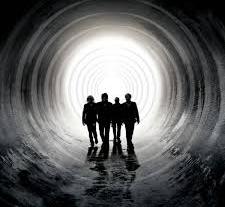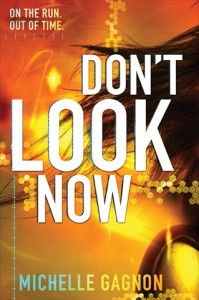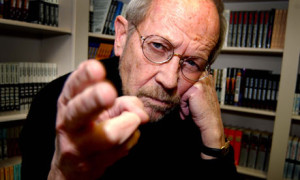Today we have a first page from a story called THE CIRCLE. My comments follow.
***
Leigh looked up from her mum’s casket, concentrating on the slatted, pitched ceiling of the church. The familiar voice of the chaplain droned on from the pulpit and she focused not his words, which would surely undo her, but to the soothing and steady cadence. She held the back of her forefinger to her nose, wincing as she touched the swollen, chapped skin.
Reaching in her handbag for a tissue, her searching fingers settled on the age-softened newspaper article her mum had given her just two days ago. A jolt fired through her stomach and she yanked her hand out and clenched her palms in her lap, her fingers twining together until her knuckles blanched.
What had they been like?
The unspoken question itself felt traitorous. A glance to her left confirmed that her dad—that is, the only man she’d ever known as a father—was sitting upright, only the sparkling reflection on his cheeks belied his stoic figure.
Leigh took a steadying breath. Today she would ask Uncle Pete about the article. She cast a quick glance over her shoulder to see if she could spot him in the pews but her attention was caught by a man near the door in plain green Barrack Dress, staring at her.
She turned around to face forward again, her brow puckered. The military uniform must mean he was a friend of her dad. But surely the man was too young? Her dad had retired from the service when she was a baby. And the man had rudely not looked away when she’d held his gaze.
She turned to look again, but now there was only empty space where he’d stood.
###
Leigh found Uncle Pete at the reception back at the house. He was loading a plate from the buffet of casseroles and cakes in the dining room. When he saw her, he set it down and held out a hand. As she hugged him, he tucked her head under his chin.
“Hey little bit,” he said. “I’m so sorry. Your mum was one of a kind.”
Leigh relaxed into his embrace, hitching in a stuttering sigh. Though they weren’t related, she’d called him uncle as long as she could remember. And now he might be the only one who could help her. “Can I talk to you alone?”
***
My comments: I like the premise the writer establishes in this first page. We immediately know that the narrator is going through multiple crises–her mother has just died, and she just learned that the parents she has always known are not her real parents. There’s also a hint of military intrigue to come. This is a good opening situation.
In general, the writing here is strong enough to keep me reading. I would suggest some tweaking to make it even stronger. I put my specific suggestions in bold red.
Leigh looked up from her mum’s casket, concentrating on the slatted, pitched ceiling of the church. The familiar voice of the chaplain
(Perhaps mention the chaplain by name, if he’s familiar?) droned on from the pulpit. She
(I think this sentence is stronger if broken up) focused not on
(Missing preposition inserted here) his words, which would surely undo her, but to the soothing and steady cadence.
(After inserting the missing ‘on’, the combination with ‘to’ doesn’t read well. Might need to rewrite this sentence)
She held the back of her forefinger to her nose, wincing as she touched the swollen, chapped skin.
(This sounds stronger to me without the ‘the’. Also, the first sentence of the paragraph already has a gerund clause. Try to vary the structure of sentences in every paragraph as much as possible, to punch up the rhythm.)
Reaching in her handbag for a tissue, her searching fingers settled on the age-softened newspaper article her mum had given her just two days ago.
(Another gerund clause, plus there are two “ing” words in the same sentence. As writers, we all tend to overuse one type of structure, punctuation, or phrasing in our first drafts. This writer might want to check for the overuse of ‘ing’ throughout the manuscript.)
A jolt fired through her stomach and she yanked her hand out and clenched her palms in her lap, her fingers twining together until her knuckles blanched.
(Here, there are too many actions in one sentence: jolt, yank, clench, twine, and blanch. Consider breaking this sentence up to strengthen the flow.)
What had they been like?
(I put this in italics to indicate inner thought. This sentence was a bit jarring to me as I read it. It might have worked better if we’d gotten some clue about what was in the newspaper. Perhaps the narrator could glance down and register a word from the headline, a picture, or something that would set up her internal question.)
The unspoken question itself felt traitorous.
(This sentence felt slightly awkward to me.)
A glance to her left confirmed that her dad—that is, the only man she’d ever known as a father—was sitting upright. Only the sparkling
(ING Alert. Break up this sentence to make it stonger. Also, ‘sparkling” didn’t convey tears to me on the first read) reflection on his cheeks belied his stoic figure.
(“Belied his stoic figure” seems stiff, somewhat Churchillian. It doesn’t match the tone of the rest of the piece.)
Leigh took a steadying breath. Today she would ask Uncle Pete about the article. She cast a quick glance over her shoulder to see if she could spot him in the pews but her attention was caught by a man near the door in plain green Barrack Dress, staring at her.
(ING Alert. And again, there are too many actions in one sentence. Separate the man’s action to distinguish it from hers.)
She turned around to face forward again, her brow puckered.
(This might just be me, but I don’t like the word ‘puckered’. I think it’s because I read so many manuscripts that overdo facial and hand tics.)
The military uniform must mean he was a friend of her dad. But surely the man was too young? Her dad had retired from the service when she was a baby.
(It might be stronger to mention the name of the Service. Specific descriptions give the reader hints about your characters’ backgrounds, and adds authenticity to your writing)
And the man had rudely not looked away when she’d held his gaze.
(Why is this rude? Wasn’t she staring at him as well? “Rudely not looked away” is slightly awkward, as well. )
She turned to look again, but now there was only empty space where he’d stood.
###
Leigh found Uncle Pete at the reception back at the house. He was loading a plate from the buffet of casseroles and cakes in the dining room. When he saw her, he set it down and held out a hand. As she hugged him, he tucked her head under his chin.
“Hey Little Bit,” he said. “I’m so sorry. Your mum was one of a kind.”
Leigh relaxed into his embrace, hitching in a stuttering sigh.
(ING Alert)
Though they weren’t related, she’d called him uncle as long as she could remember. And now he might be the only one who could help her. “Can I talk to you alone?”
(The formatting of the paragraph detracts from the tension of the scene, and it’s slightly unclear who is asking the question. It might be stronger if you show her voicing a muffled question into the wool of his jacket, or something like that.
***
Overall: I made a lot of suggestions for this page, but the fixes are all fairly minor, and easily made. This is a manuscript that seems very promising to me. It just needs a polish and some tweaking to get it to the next level. The writer should examine the rest of the manuscript for some of the issues we’ve discussed.
Thank you for submitting this page, Writer! Well done, and keep going with this story!
TKZ’ers, do you have any suggestions or anything you’d like to add?






